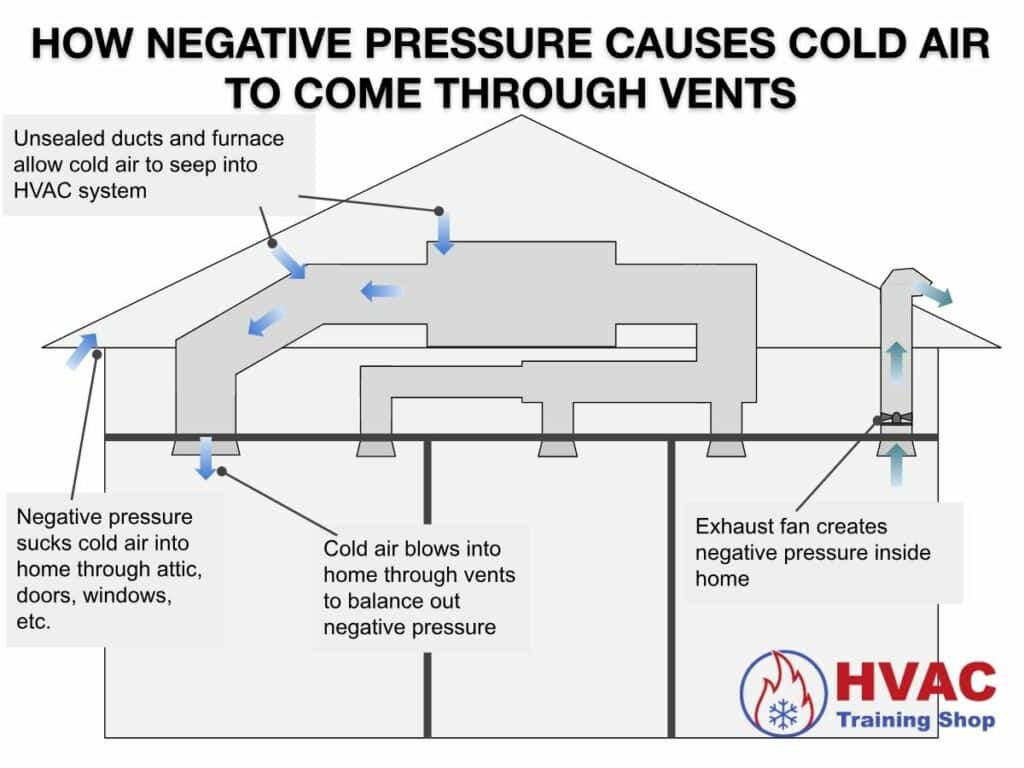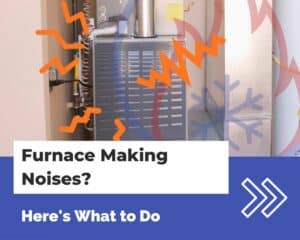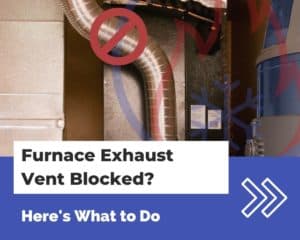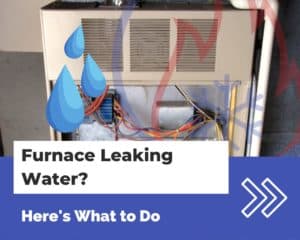Have you noticed that even when your furnace is off, you’re getting a blast of cold air from your home’s air vents?
Yeah, it’s a weird and chilly twist that a lot of folks run into. You’d think those vents would be there to just heat your home, right?
Well, it’s not just random bad luck.
The most common reason cold air comes through your vents when your furnace is off is due to negative pressure inside your home.
In this article, I’ll explain why negative pressure in your home makes cold air come through your vents.
I’ll also go over all of the things that cause negative pressure in your home, and how to prevent cold air from seeping into your home through your vents.
There Is Negative Pressure Inside Your Home
Negative pressure in your home is most likely reason why cold air is coming in through your vents – even when your furnace is off.
So what is negative pressure anyway? And how does it make cold air seep into your home through the vents?
So first, let me clear up a common misconception. The pressure inside your home isn’t actually negative.
Negative pressure means that the pressure inside your home is lower than the pressure outside your home. So in relation to the outside, the pressure in your home is negative.
But how does negative pressure in your home cause cold air to seep in?
It’s due to a pressure imbalance. Since the pressure in your home is lower than the pressure outside, air from the outside will try to find its way into your home to balance out the pressure.
When the pressure in your home is negative, then air will seep into your home through the cracks around your doors and your windows.
And if you have leaky ductwork or an unsealed furnace, cold air can seep into your home through your home’s air ducts and air vents.
What Creates Negative Pressure in Your Home?
So now that you know how negative pressure in your home causes air to seep in through its vents, I bet you’re wondering what causes negative pressure in the first place.
There are 3 causes of negative pressure inside your home:
- Wind. Wind can influence the pressure dynamics outside your home (or in your attic). This often leads to negative pressure in your home, especially if the wind is blowing hard.
- The stack effect. The stack effect occurs when the warm air inside of your home rises up through your home and then seeps outside through the crevices in your attic and roof.
- Mechanical systems. Equipment such as bathroom exhaust fans, clothes dryers, and even gas water heaters ventilate air out of your home, creating a negative pressure inside your home.
I’ll go over all of these causes below, and explain how they can cause cold air to come out of your home’s air vents.
How Wind Causes Cold Air to Come Out of Your Vents
The dynamics of wind around your home can significantly influence the pressure of the air in your home and consequently the flow of air through your home’s ventilation system.
Consider this example: Wind blows into your home’s attic – this pressurizes your home’s attic and causes cold air to seep into your furnace’s ductwork, causing cold air to come out of your home’s vents.
Another possible scenario is if wind blows across one side of your home. This creates an area of low pressure due to Bernoulli’s principle, which in turn causes air to seep out of that side of your home.
To balance out the air seepage, cold air from the outside of your home seeps into your home through your furnace’s duct system, causing cold air to come out of your home’s vents.
How the Stack Effect Causes Cold Air to Come Out of Your Vents
The stack effect is one of the most overlooked causes of air movement inside of homes.
The stack effect happens when warm air moves from the lower areas in your home to the higher areas in your home. This movement of air creates negative pressure in the lower areas, which draws in air from the outside of your home.
The air usually seeps in through doors and windows. But if your furnace is located in the basement of your home, cold outside air can seep into your home through your furnace’s ductwork and cause cold air to come into your home through your vents.
Are Your Home’s Mechanical Systems Making Cold Air Come Out of Your Vents?
Basically, any fan that blows air out of your home will create negative pressure in your home.
Think of it this way, when a fan blows air out of your home, that creates an “air deficiency” inside your home.
This air deficiency is negative pressure. What results is air from the outside will try to get inside your home to restore the pressure balance.

Here is a list of devices that will create negative pressure in your home:
- Bathroom exhaust fans – Pulls humid air out of the bathroom but can also lead to negative pressure if they’re too powerful or left on for long periods.
- Kitchen exhaust hoods – Powerful exhaust hoods can extract a large amount of air, leading to significant negative pressure in your home.
- Central vacuum systems – When in operation, these systems extract a large volume of air from inside your home.
- Clothes dryers – As they vent outside, dryers remove air from the home. If the home is well-sealed and doesn’t allow makeup air to replace the exhausted air, negative pressure can result.
- Attic fans – Designed to reduce attic temperatures, but if not balanced with adequate intake vents they can pull conditioned air from the living space into the attic, creating negative pressure in your home.
- Gas water heaters – Water heaters can also create negative pressure in your home when they expel combustion gases out of their vent.
- Fireplaces – Fireplaces can draw a large volume of air up the chimney and create negative pressure in your home.
- Furnaces – Like water heaters, furnaces can cause negative pressure as they expel combustion gases.
- Single-hose portable air conditioners – Portable air conditioners blow air out of their hoses to expel hot air, this creates a slight negative pressure.
So how do you fix the negative pressure issue in your home?
Of course, one way is to stop using those devices that I listed above. But what if that’s not possible? You can’t just stop using your bathroom exhaust fan or kitchen exhaust hood – those things are needed for a reason!
Instead, you should focus on sealing off the leaky ductwork in your home, so that cold outside air isn’t able to seep into your home through your vents in the first place.
I’ll go over that below.
How to Fix Leaky Ductwork in Your Home
Leaky ductwork is often the root of the cause of cold air coming into your home through your vents.
Even if your home doesn’t have a negative pressure issue, leaky ductwork can still cause cold air to come into your home through the vents when your furnace isn’t running.
Consider this scenario: If your ductwork is located in a ventilated attic, a breeze of wind can pressurize your attic and push cold air into your leaky ductwork. And guess what? That cold air will eventually find its way into your home through your vents.
So at this point, I should have made one thing clear: leaky ductwork is very bad.
Well, how do you fix leaky ductwork, then?
The quickest way to fix leaky ductwork is to tape its leaky areas using aluminum tape.
Aluminum tape can be purchased over the counter at most hardware stores.
If you want the heavier-duty aluminum tape, you’ll need to buy it from your local HVAC supply store or buy some online.
This scrim-backed aluminum foil tape is reinforced, so it won’t tear easily after its applied. This means that it will keep your ducts sealed for years to come.
In some situations, sealing your ducts may need to be done by a professional, that way they can measure your HVAC system’s airflows to ensure that everything is staying in balance.
An important thing to keep in mind is that even if your leaky ducts aren’t allowing cold air into your home, they’re still eating away at the efficiency of your home’s HVAC system.
A study by the Berkely Lab Environmental Energy Technologies Division found that on average, supply ducts in American homes leak out about 10% of their air, while return ducts leak air at a rate of 12%.
Fixing leaky ductwork is not only a smart way to keep you warmer in the winter, but also a good way to keep your energy bills down.
Is an Outside Air Duct Allowing Cold Air to Seep into Your Home?
Some home HVAC systems incorporate an outside air duct to allow fresh outside air to flow into the home.
Also known a fresh air intake, an outside air duct is important for indoor air quality and to keep CO2 levels down in homes.
However, an outside air duct can sometimes allow cold air to seep into your home through your home’s duct system when your furnace isn’t running.
That’s why most fresh air intakes nowadays also have a motorized damper installed on them to open up when the HVAC system runs to allow fresh air inside of the home.
When your furnace turns on, the motorized damper opens to allow some fresh air into your home. Then when your furnace turns off, the damper closes to ensure that unconditioned outside air isn’t allowed into your home.
If the damper stays open when your furnace is off, then cold air can seep into your home’s vents through your furnace’s fresh air intake.
If your outside air duct doesn’t have a damper at all, then that will definitely cause cold air to come into your home through your furnace’s ductwork and vents.




